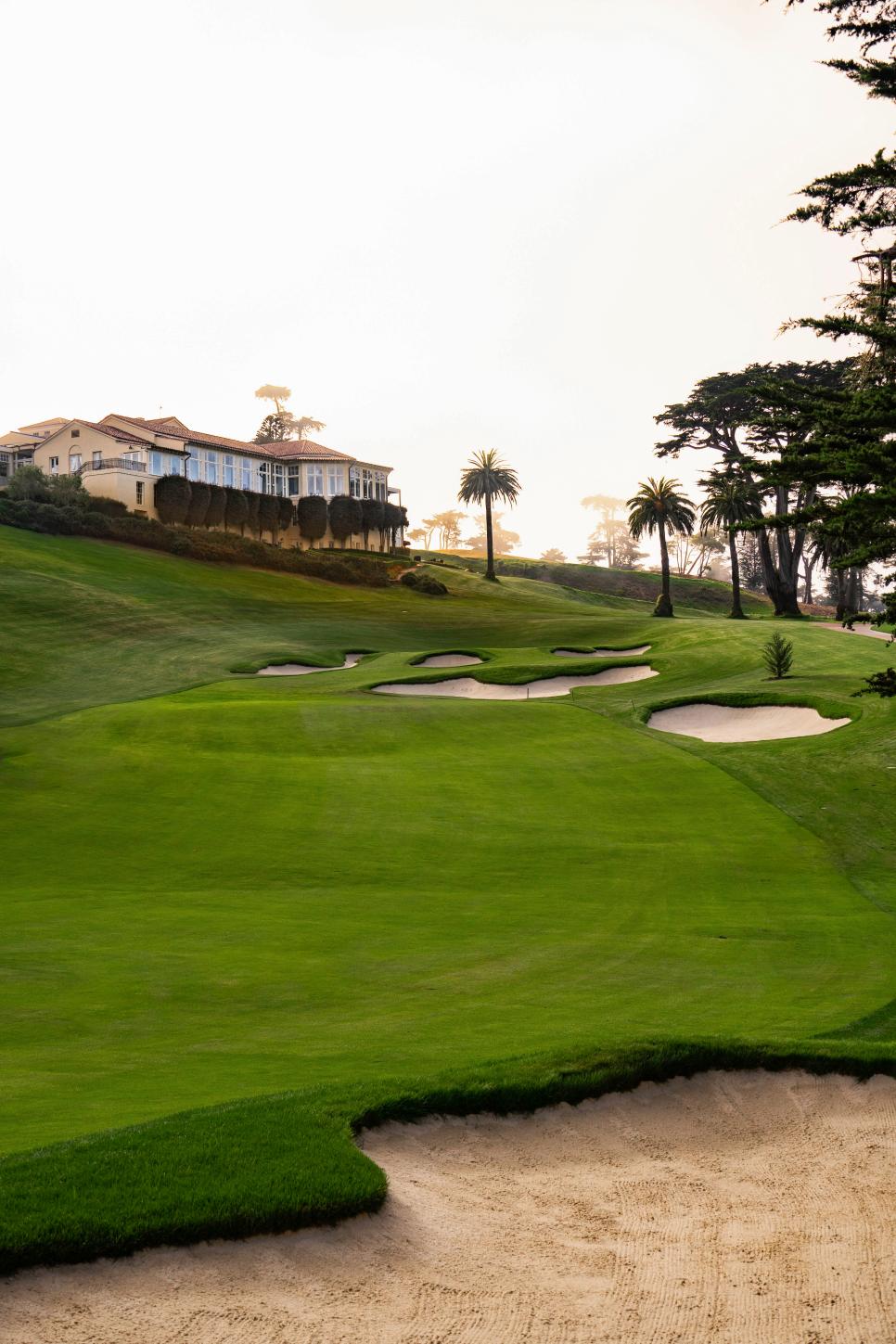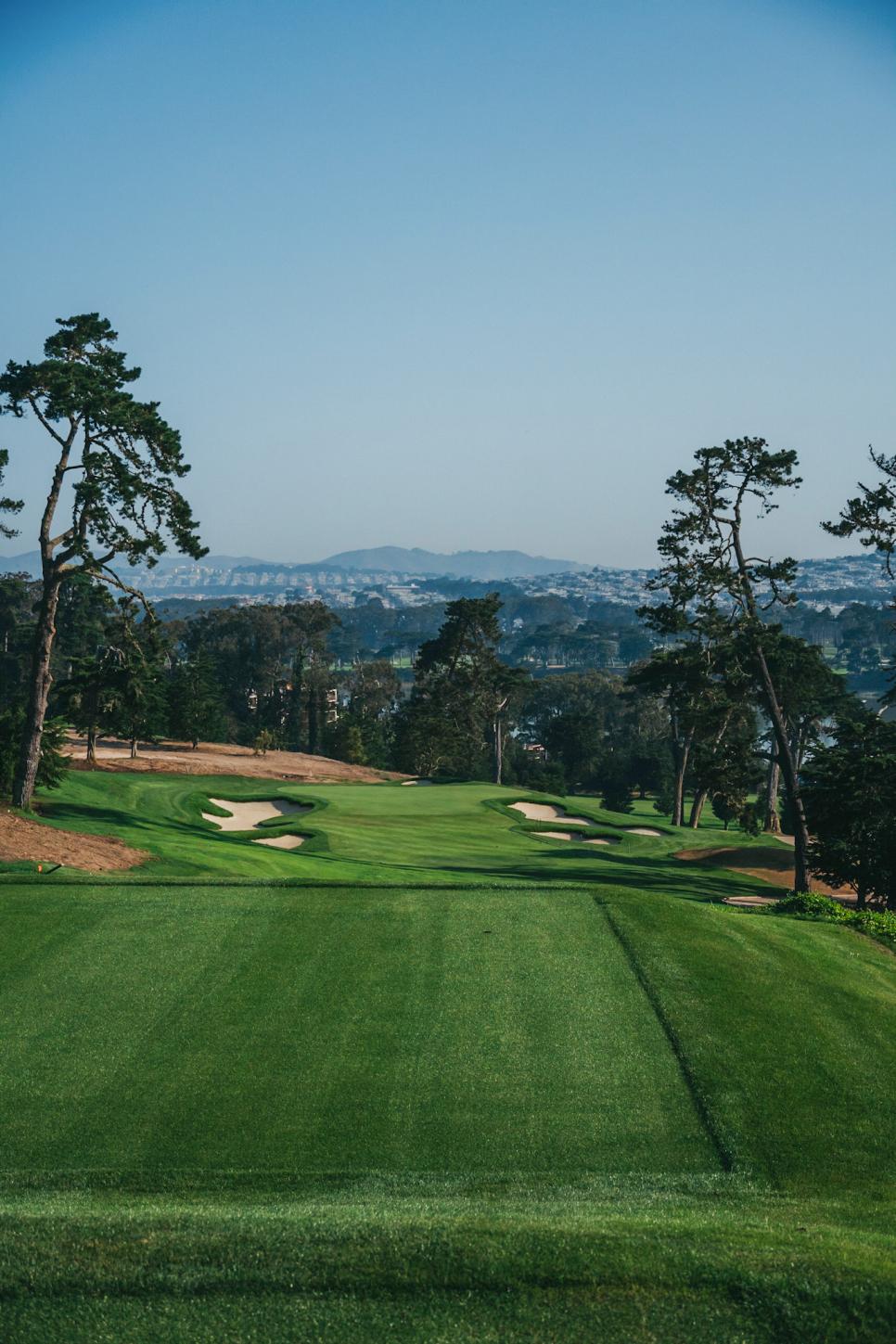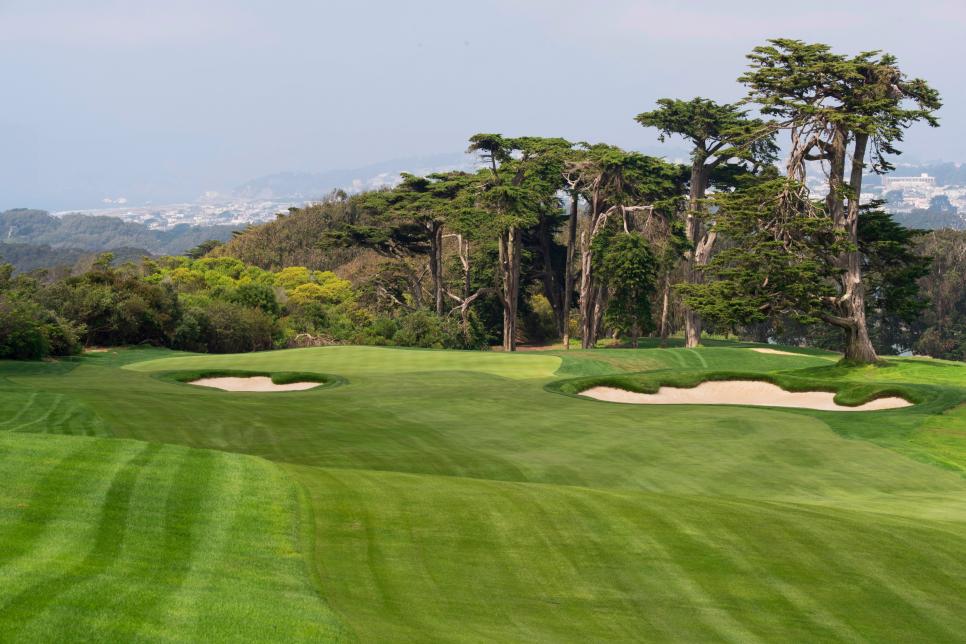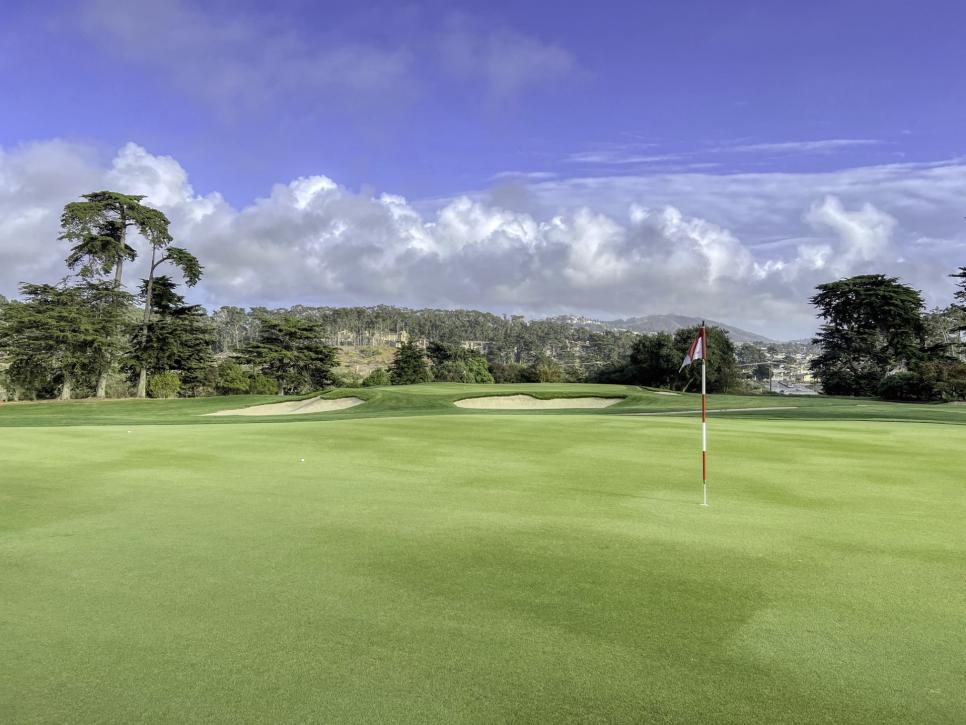Courses
The Olympic Club looks different than you’ve ever seen it, and we got a first look

Olympic Club's famous 18th hole.
Kirk Rice
We often refer back to the players who prevail on certain courses as a means to measure the greatness of those designs—at least as tournament tests. Jack Nicklaus, Lanny Wadkins, Tom Watson, Tom Kite and Tiger Woods have helped cement the reputation of Pebble Beach. Oakmont has identified greats like Gene Sarazen, Bobby Jones, Sam Snead, Ben Hogan, Jack Nicklaus, Johnny Miller, Ernie Els, Paula Creamer and Dustin Johnson. And Hogan, Arnold Palmer, Watson, Payne Stewart, Jim Furyk and Lexi Thompson have enshrined the championship bona fides of the Lake Course at San Francisco’s Olympic Club.
Of course, Hogan, Palmer, Watson, Furyk and Thompson didn’t win at Olympic Club—they faltered there. This alternate docket of near misses and tragic collapses is as much a part of the Lake Course’s lore as the calculating, straight-hitting lesser-remembered opportunists—Jack Fleck, Billy Casper, Scott Simpson, Lee Janzen, Webb Simpson and Yuka Saso—who did lift U.S Open trophies.
The Lake Course’s overhanging trees, lush roughs and moody atmosphere that keeps players on edge and forebodes strange twists of fate are also integral to its lore. The towering cypress trees and their tufts of dark umbrella-like needles are surrogates for the clouds and fog that often waft across the property’s sloping hillside. Historically they’ve acted as bars paralleling the course’s long penitentiary walks, snaring balls and clogging out recovery options. Deep greenside bunkers with high, shaggy lips of long grass added to the aura of constriction. The most dangerous place at Olympic Club, if not off the fairways or embedded in the sand, has always been in the lead during a final round.
This brooding and sometimes terrifying style of golf has made Olympic Club one of the most unpredictable venues for major championships. It will be revealing to see if the course induces the same kind of turmoil following a new renovation by Gil Hanse and Jim Wagner that has substantially peeled back many of the elements that have made the Lake Course, ranked 35th on America’s 100 Greatest Courses, such a haunting, punitive tournament site.

The Lake Course's downhill par-3 third is one of the best views in San Francisco.
Kirk Rice
When the game’s elite begin to cycle through once again, beginning with the 2025 U.S. Amateur, the question will begin to be answered: Have the roughs and trees been a crutch the design has leaned on, or is there is something more architecturally complex that makes scoring at Olympic Club so exacting?
If there’s a word that summarizes the work of Hanse, Wagner and their shapers, it’s space. The intentional removal of hundreds of old cypress and pines, and the subsequent unintentional removal of many more during the storms that ravished the course earlier in 2023, has thinned out the canopy and opened never-before-seen (at least not in this lifetime) cross-valley views to the cream-and-wine foothill neighborhoods to the north and east. Uncluttering these vistas gives the course an emotional charge, adding composition, color and depth-of-field charm while connecting the property to its broader environment.
The spacing also allows for the expansion of fairways and greens. The Lake Course’s fairways were generally cut 25 to 35 yards wide; most are now 10 yards or more wider but feel even more open with the absence of overhanging trees. Members will find the holes far more playable, and probably more enjoyable, and competitors who previously tried only to shoot arrow-straight will have the opportunity to choose their spots to go on offense, notably at bending holes like four, five, 10 and 14. Will the added attack tool lead to lower scores, or lure them into trouble, especially with the addition of a number of new fairway bunkers? The course’s shot options, if nothing else, have multiplied.
The greens were also expanded by roughly 30 percent. This adds new perimeter pin placements—another enticement to aggressive players—but also means those playing conservatively to the center of greens will have longer putts out to the border hole locations. Hanse and Wagner removed a number of close-cropped chipping areas and fringe, so missing greens by even a foot will leave a chip or pitch from the rough.

The green at Olympic Club's par-5 first has more movement than most holes.
Frank Morse
Because the club desires to remain a host for national events, the putting contours have been kept muted to ensure they can run at higher speeds. This is an unfortunate concession to the desire for fast greens, but several exceptions, including the new first, a reachable par 5 with a large and lovely rippling putting surface (above), the rectangular ninth, the par-4 11th with high-low tiers and the dimpled 17th, sprinkle in interest.
The bunkers Hanse and Wagner inherited were excruciatingly deep and ill-fitted for the topography of the site. They’ve been shallowed and tucked more comfortably into the surrounding upslopes—stretched more horizontally to elongate the picture, if you will, reducing verticality on an already vertical site.
The biggest change is the seventh hole. Always a short par 4, it’s been rotated about 15 degrees to the right with a new green placed in the area where the old par-3 eighth tee used to be before that hole was relocated in 2009. The new 316-yard uphill seventh is one of the most spirited holes at Olympic Club with a gambling drive that must contend with a cross bunker on the left and a deep thumbprint depression covering the first half of the green.

Cross course and cross-valley views like this between 10 and 15 were scarce prior to the renovation.
Derek Duncan
What hasn’t changed at the Lake Course is the need to read the sloping terrain, both on drives and, crucially, on putts. The routing works its way back and forth up and down Olympic Club’s hillside, and most holes tilt one way or another. Being below the hole and reading the proper amount of break when sidehill is the only way to put up a solid score, and now there’s more room for players to get into tactical positions.
The Lake Course will be getting plenty of national attention in the coming years. In addition to the ’25 Amateur, Olympic Club will host the 2028 PGA Championship, the 2030 U.S. Women’s Amateur and the 2033 Ryder Cup. The fog has lifted on the Lake Course’s old, bewitching architecture. The golf world will soon see what the course plays like in brighter sunlight, and if a new era of champions can hold their lead.

• • •
Explore Golf Digest's recently relaunched Places to Play community, where you can add star ratings and reviews for all the courses you play. We've collected tens of thousands of reviews from our course-ranking panelists to deliver a premium experience, which includes experts' opinions, bonus course photography and videos, plus much more. Check it out here!

